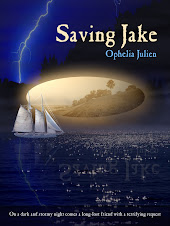
About a year ago, Jim and I decided to become members of The Field Museum of Natural History in Chicago. The Field Museum was always my favorite museum while I was growing up in the city because it had dinosaurs. And lots of other long-dead things. The Museum of Science and Industry, The Shedd Aquarium, The Adler Planetarium, The Art Institute of Chicago - all of these are famous museums and rightfully so. Their collections are truly amazing, and the displays are informative and fun. Any day you go, you are quite likely to run into at least one field trip from a local, and sometimes, not so local school. And there are the smaller venues like The Chicago Historical Society,
The National Museum of Health and Medicine, The Spertus Museum of Jewish Studies, and The Museum of Contemporary Art.
But I'm a sucker for the Field Museum. It's the six-year old paleontologist in me coming back to the fore. Stephen Spielburg showed me my dream in the original Jurassic Park when the kids get to meet a brachiosaurus face to face. I had a thing about the herbivores even though I was well-versed in the carnivores as well. It was great when the Field Museum put Tyrannosaurus Sue on display, but I always look for my herbivores.
Dinosaurs, collections of stuffed animals (as in taxonomy, not as in Beany Babies), and display case upon display case of everything from native clothing of indigenous people from all over the globe to the actual Man Eaters of Tsavo (The Ghost and the Darkness, anyone?) and the Man Eater of Mfuwe ( lion that actually entered people's homes to attack and eat them). And in the lower level of the building are the collections from Ancient Egypt, up to and including mummies.
When the kids were little, we spent a lot of time among those mummies because two of the four of them were fascinated by Egypt. And it was then that I got to share with them the legend of Harwa, the Screaming Mummy. There is a story that one night, as a museum security guard toured the Field Museum premises, he heard the sound of screaming coming from the lower level. He rushed down to investigate and found no one living there among the display cases. He did, however, discover that the mummy named Harwa was lying facedown inside the huge glass case that housed him, his sarcophagus, and a few other items from Egypt. The case is sealed off from the environment to protect the artifacts inside, and no one could figure what had pitched the mummy completely out of his coffin.
And was it also at the Field Museum that the two sitting mummies from South America, displayed in an enclosed glass case made up to look like the cave where they had been discovered, were found - still enclosed in their glass case- on the floor beside their display pedestal? I know I got that story around the same time I learned the one about Harwa. Museum staff said that they had used a forklift to put that glass case on top of the pedestal, it was so large and weighed so much. But something had moved it the floor beside that same pedestal, with nothing inside or outside of the case disturbed. And not a forklift in sight. Not to mention that this was also discovered at night by a security guard making the rounds.
When I was a child and got to the museum on field trips, or on a family outing, I was always aware of an undercurrent among the display cases, not only in the Egypt exhibit, but even the halls that showcase indigenous peoples of the Americas, Asia, and Europe. This might have something to do with the fact that the lighting is always kept low, to prevent light damage to the artifacts. And it might have to do with something else. There is a sense of watchfulness in those halls and galleries, a feeling of something watching and waiting, inspecting all the visitors who wander among the displays, looking, reading, learning.
The feeling doesn't weird me out completely, not like an antique store where the energy feels unfocused and intense and demanding, but it is definitely there. I still love to stroll through the museum and I am glad of our official membership. But I always, always, always come away with the feeling of having visited, not just seen and looked. And it always adds to the experience. I write about ghosts - what could be better?







